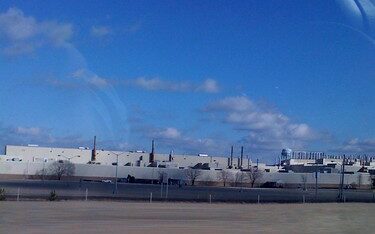Key Takeaways
- Trump hailed the Lordstown plant as a big win for Ohio jobs.
- An EV startup took over but had no car-making experience.
- The startup failed, went bankrupt, and sold to Foxconn.
- Foxconn also couldn’t revive the plant, and Fisker talks collapsed.
- Now SoftBank will turn the site into an AI equipment factory.
The Rise and Fall of the Lordstown Plant
Donald Trump promised to save the Lordstown plant in Ohio. He called it a triumph of his industrial policy. However, the site never made the cars he vowed to deliver. Instead, it became a string of broken promises and failed deals.
A Promise to Save Jobs
In 2019, General Motors announced it would close the Lordstown plant. That move threatened many manufacturing jobs in northeast Ohio. Trump attacked GM’s CEO on social media. He demanded she sell the plant or keep it open. Soon after, an electric-vehicle startup grabbed the site. The President showcased their prototype truck at the White House. He even held campaign events there, touting the plant’s future.
Yet nobody checked if the startup knew how to build cars. Instead, Trump used the Lordstown plant as a campaign prop. He claimed to have “made a deal” that would save workers and revive a struggling region.
Why the Lordstown Plant Collapsed
First, the startup had no track record in auto manufacturing. Secondly, its electric pickup trucks caught fire during tests. Moreover, weak consumer demand hurt sales forecasts. The startup relied heavily on a $40 million loan to retrofit the site. But that loan did not guarantee market success.
Within a few years, the company sold the Lordstown plant to Foxconn. Foxconn planned to build electric vehicles there for Fisker and IndiEV. Yet both automakers failed, leaving Foxconn with an empty factory. Finally, Foxconn filed for bankruptcy protection in 2023.
The story of the Lordstown plant shows that political promises alone cannot overcome market realities. Even massive subsidies could not spark enough interest in those electric trucks.
What Comes Next for the Lordstown Plant
After Foxconn’s failure, the site found a new buyer. In 2024, SoftBank agreed to purchase the plant. But this time, it will not build cars. Instead, SoftBank will convert the facility into a factory for AI data center equipment. This shift mirrors broader industry trends. Many companies now focus on data processing and cloud services.
Thus, the Lordstown plant will finally see life again. However, it will serve a tech purpose rather than an auto one. The region might gain new jobs, but they will not be assembly-line roles. Instead, workers will likely handle electronics and server components.
Lessons from the Lordstown Plant Debacle
First, politicians may promise big industrial wins. Yet markets decide winners and losers. Second, ribbon-cutting ceremonies do not ensure production success. Third, backing inexperienced startups carries high risks. Lastly, industrial policy needs careful planning, not just campaign slogans.
Therefore, the case of the Lordstown plant should serve as a warning. Political leaders must balance ambition with practical checks. Otherwise, they risk turning vibrant factories into empty shells.
Frequently Asked Questions
Why did General Motors close the Lordstown plant?
General Motors shut the plant to cut costs and reorganize its production. The move aimed to focus on more profitable factories and new vehicle lines.
How did Trump get involved with the Lordstown plant?
After GM announced the closure, Trump publicly pressured the company’s CEO. He celebrated an EV startup’s takeover of the site and used its prototype as a campaign prop.
What led to the electric-vehicle startup’s failure?
The startup lacked car-making experience, faced weak demand, and saw its trucks fail safety tests. These factors sank investor confidence and forced it to sell the plant.
How will SoftBank use the former Lordstown plant?
SoftBank plans to convert the facility into a factory for producing AI data center equipment. This new focus reflects growing demand for cloud and server technologies.

